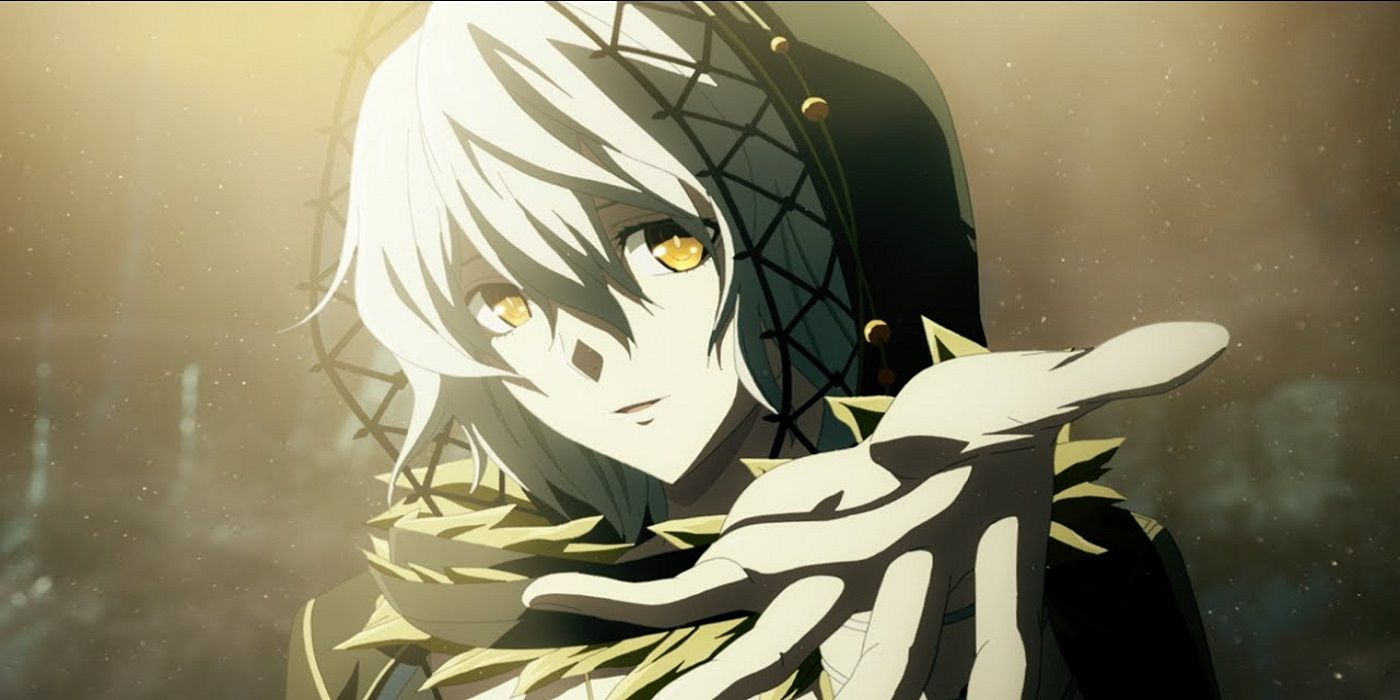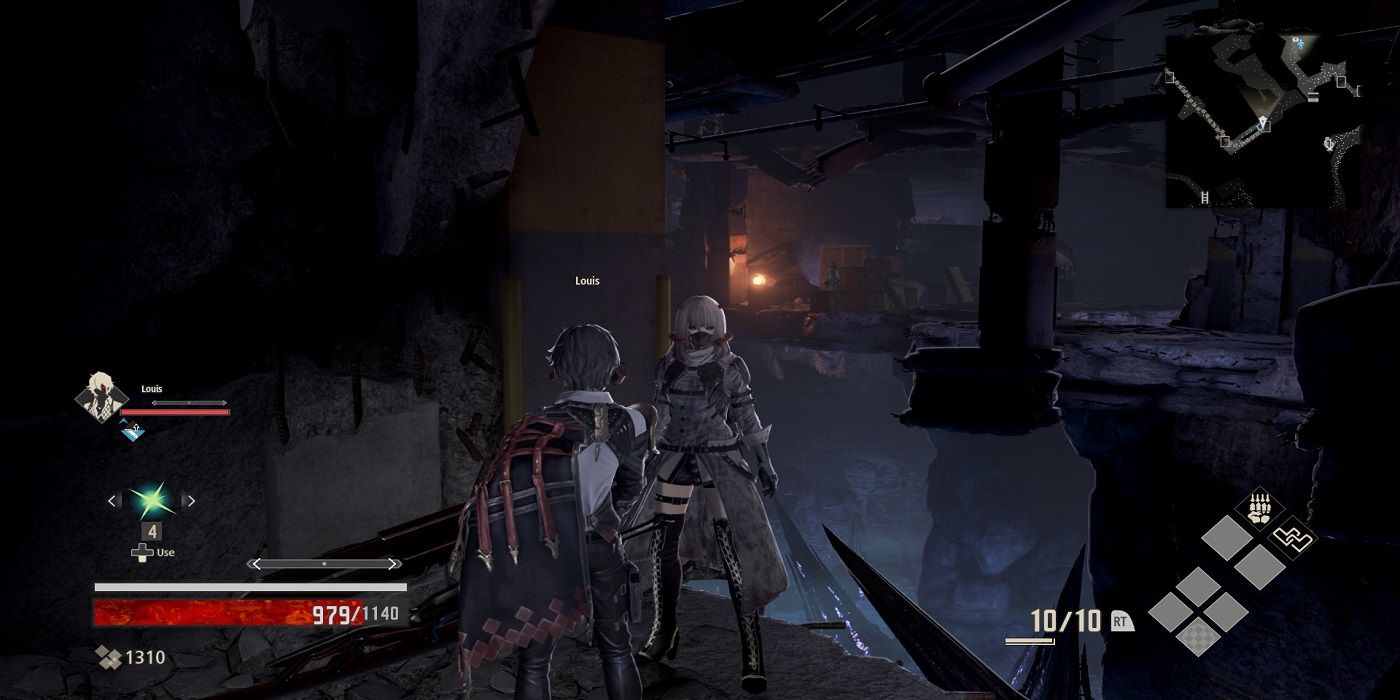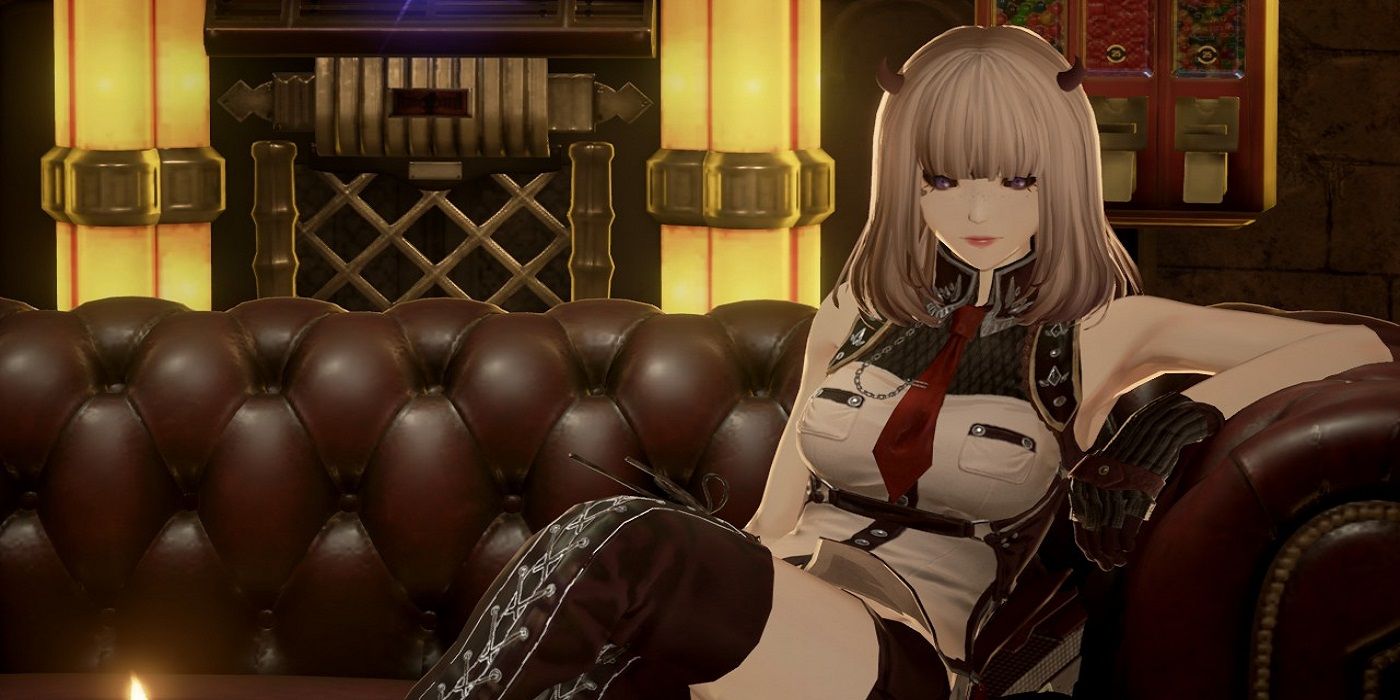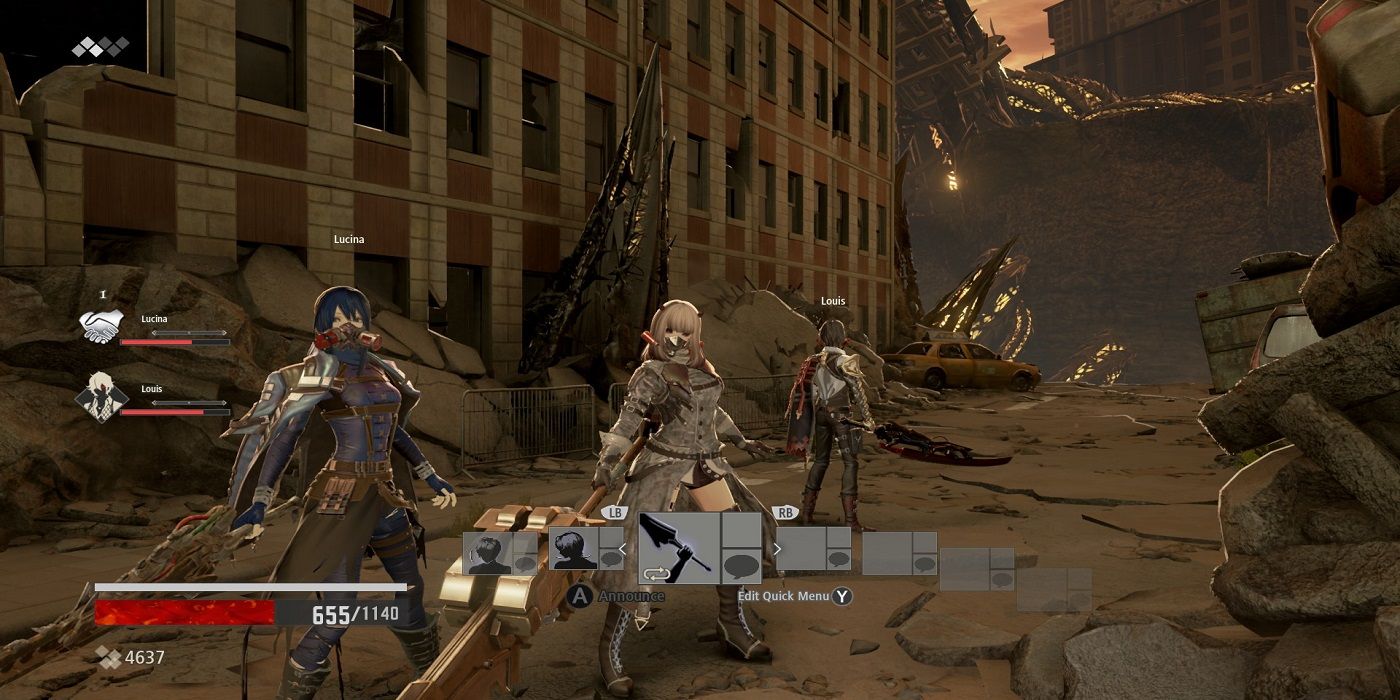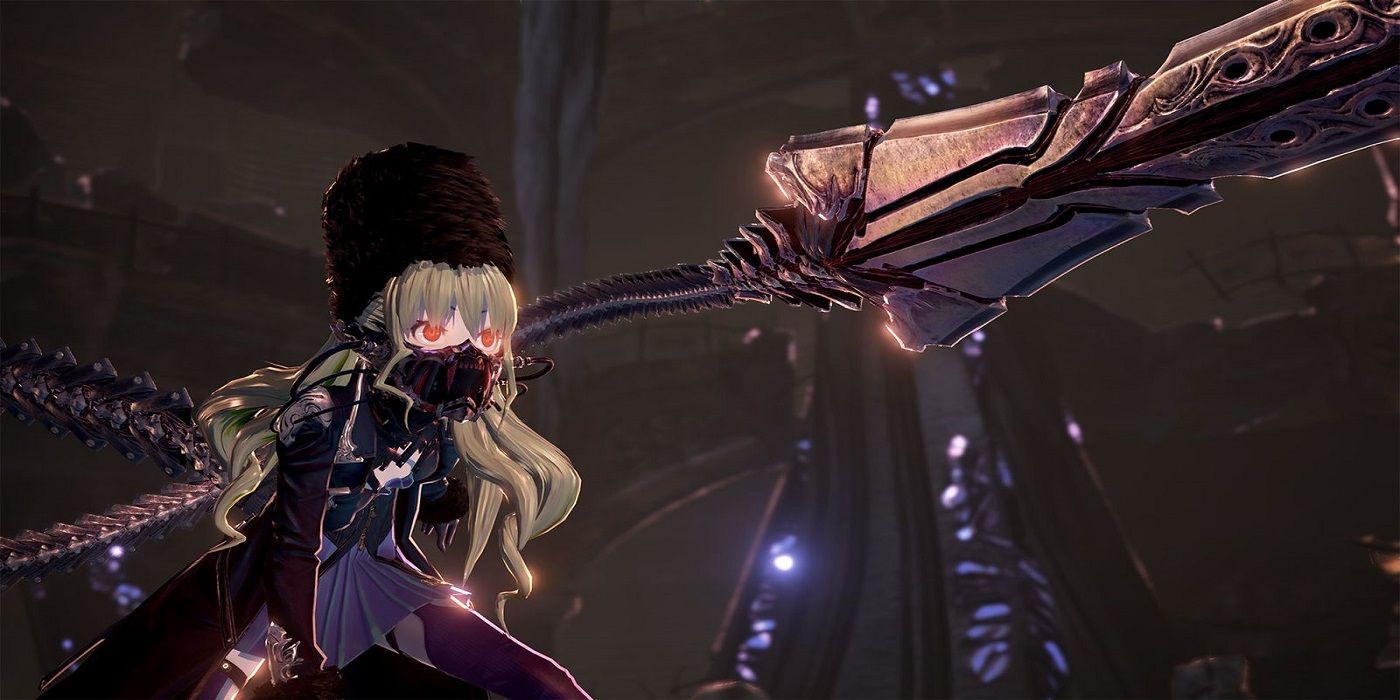Code Vein is a brand new Souls-like from Bandai Namco that is sure to slake the thirst of anyone who misses classic Souls-Borne titles. The game has a remarkable similarity to the FromSoftware-made Souls games, even more so than similar attempts at the formula by other developers.
However, Code Vein stands out in one very apparent way, with the aesthetic markedly different from other Souls-likes. While Dark Souls took a lot of inspiration from anime and manga, notably the classic dark fantasy manga Berserk, its artstyle was decidedly focused on gritty realism and somber-hued medieval level design. The beauty in its levels came from brief splashes of color in the subdued landscapes of ruined stone castles, murky swamps, abandoned villages, and austere, empty cities.
Code Vein, on the other hand, goes all-in on the stylized aesthetic of an anime setting. While still relying on gothic ruins to fit the post-apocalypse and vampire-centered story, Code Vein eschews realism in favor of an over-the-top celebration of anime style and tropes. Even the smaller weapons stand at least as tall as the player character, NPCs are stylish and brightly colored, attacks are flamboyant, and cutscenes look like clips from CrunchyRoll hits.
What is Code Vein Under the Anime Skin?
At its core, Code Vein is a very successful take on the RPG formula pioneered by Dark Souls. For most people, it would be totally believable if they were told that this game was made by FromSoftware. Long-time Souls fans, however, will recognize slight differences in enemy movement, AI behavior, dodge and parry timing, and other small details that give FromSoftware’s games their unique flavor.
What Code Vein really does well is level design. Other Souls-like games like Nioh may get combat just right, but level design is genuinely special in Code Vein. Code Vein’s dense levels and deliberate design make finding shortcuts, secrets, and treasure endlessly satisfying.
Combat is generally easier than that in Dark Souls, but no less fun. While the addition of AI companions and a slightly less punishing combat system takes away some of the difficulty, bosses can still take several tries. Players still have to do a bit of deliberate planning to avoid getting ambushed or overwhelmed by even basic enemies. This means that even without the looks, Code Vein is a satisfying and refreshing take on the Souls-like formula.
Customization
First, one must never underestimate the benefits of a robust character creator. The Code Vein character creator has a true wealth of options taken from the annals of anime character traits, allowing players to create their ideal waifu, husbando, or a stone-cold vampire to star in all the game’s gorgeous cutscenes.
There is something great about marveling in one’s own creation, or sending out a distress signal to receive help in Code Vein's co-op from Fire Emblem's Lucina, or one of Dragon Ball Z’s Androids. For a game in which the main character is the silent type, there is a lot to be gained from giving the player full control over their hero's appearance. The diverse cast of NPCs more than makes up for the player character's mum interactions.
Refreshing Feel
Secondly, a brighter, more whimsical appearance adds a lot to a genre in which dark, gritty, and serious are the norm. It is genuinely pleasant to return to the home base to find comfortable couches, a hot spring, and a lively crew of colorful NPCs to interact with. Turning on a radio and taking screenshots of the player character lounging on a sofa is a nice change of pace from returning to Dark Souls III’s Firelink Shrine and finding a blasted, crumbling sanctuary littered with a miserable old crone as a shopkeep and a crestfallen warrior for company. Games like The Surge might change the setting, but grittiness is still the primary feeling.
Gameplay-wise, this translates to a decidedly more cinematic flair in combat. During backstabs or parries, the camera zooms in and wheels around the character as they finish their opponent, large attacks emit bursts of light, and warriors swing ridiculously over-the-top weapons with panache and style.
Story
Perhaps the most valuable change provided by the anime aesthetic of Code Vein is the way that the story is presented. Exciting, sometimes over-dramatic cutscenes introduce characters and plot points, and some gameplay sections serve to reveal memories or important changes in the story. Colorful, active NPCs have a constant role in the story as it evolves, and the game unfolds like a televised series, which is notable given how long it takes to beat Code Vein.
This means that players can have access to a rich story presented at face value, rather than hidden in item descriptions and obscure dialogues a la Dark Souls. Though some enjoy hunting for various Dark Souls theories, others will find Code Vein’s up-front presentation more accessible and engaging. This results in Code Vein succeeding not just as a Souls-like, but also as a story-driven experience on its own terms. This approach is not necessarily any better or worse than the piecemeal environmental story telling of other Souls-like games, but it is an entertaining and fresh take on the way that a game like this can present its tale.
Code Vein is out now for PC, PS4, and Xbox One.

